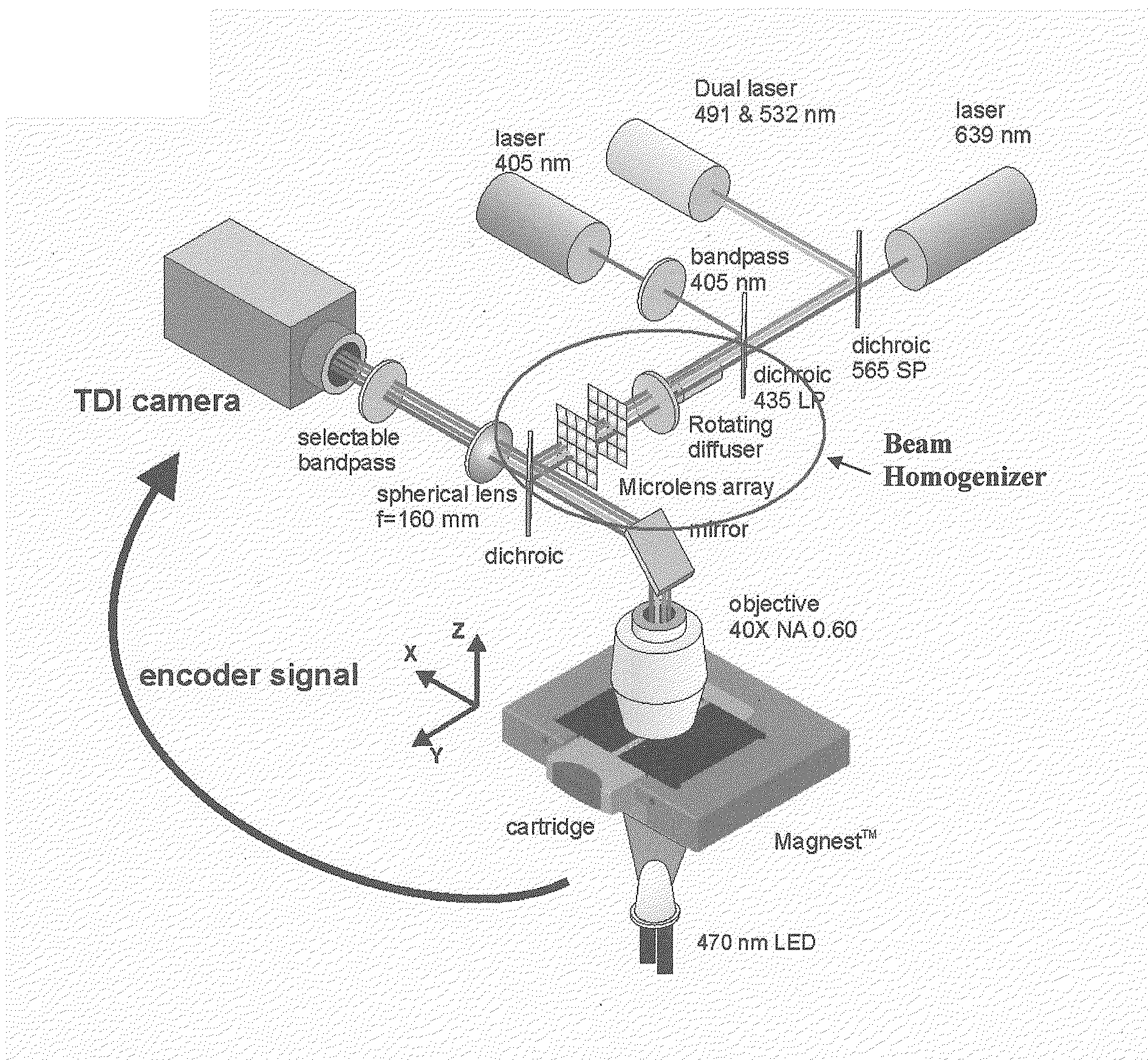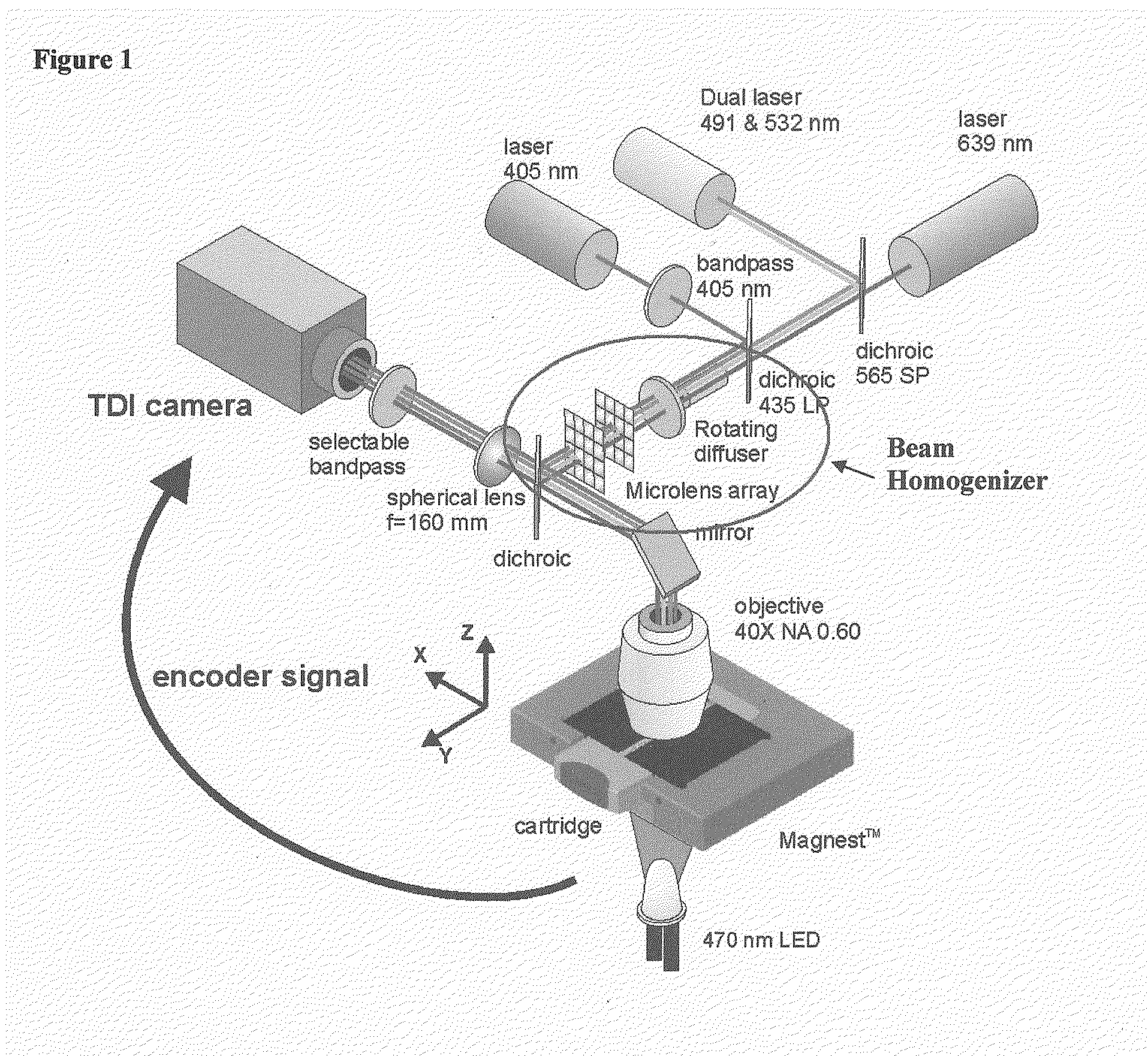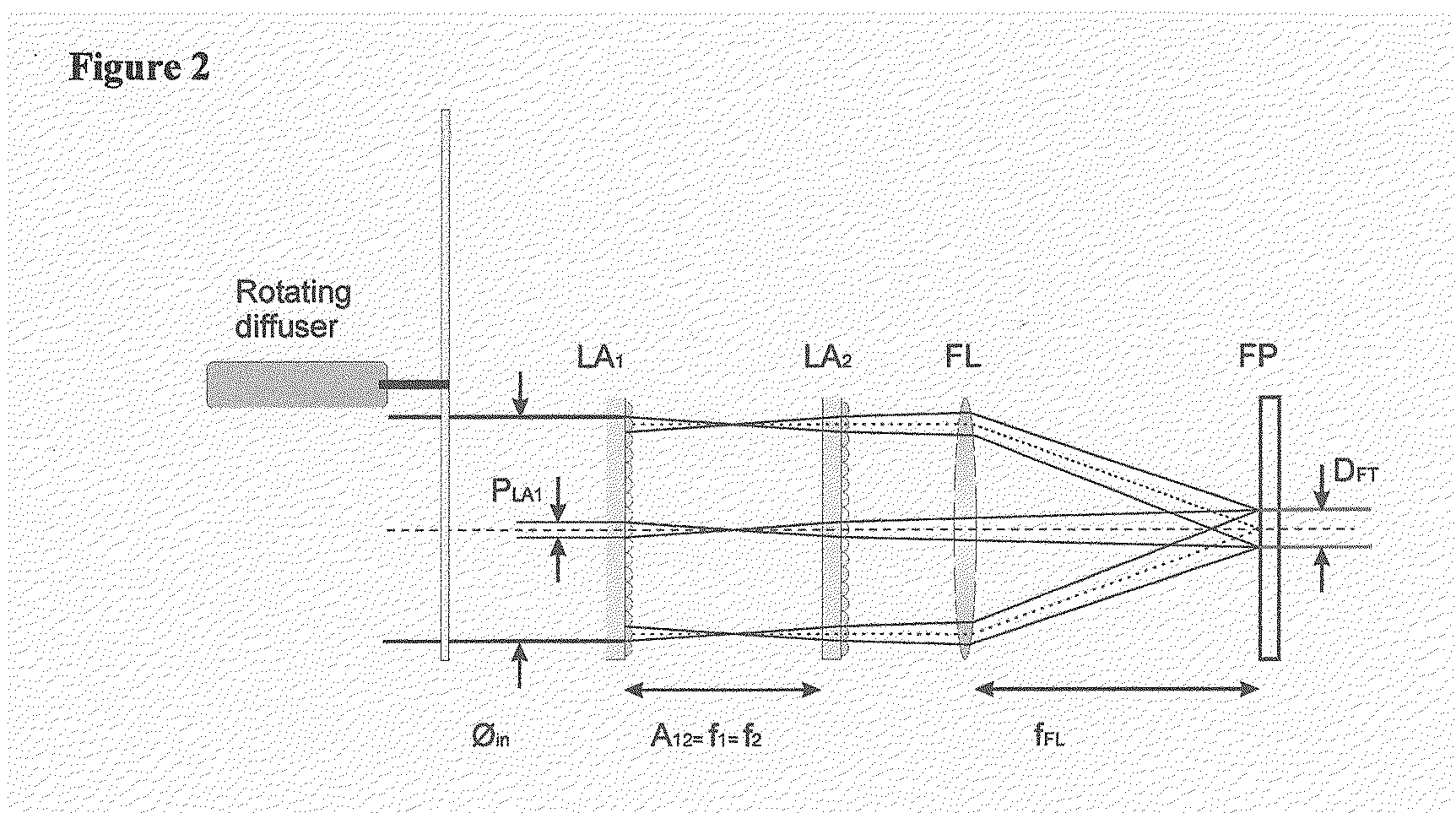Laser Illumination System in Fluorescent Microscopy
a fluorescent microscopy and laser illumination technology, applied in the field of laser illumination systems in fluorescent microscopy, can solve the problems of lack of evidence, insufficient sensitiveness of other currently available methodologies for accurate classification and typing of rare events such as circulating tumor cells, and lack of prior art systems without preliminary cell enrichment steps. , to achieve the effect of improving detection, enumeration and classification, and avoiding cell loss
- Summary
- Abstract
- Description
- Claims
- Application Information
AI Technical Summary
Benefits of technology
Problems solved by technology
Method used
Image
Examples
Embodiment Construction
[0019]The present invention combines fluorescent microscopy and a beam homogenizer to illuminate the sample with a laser. The beam homogenizer is particular useful for automated fluorescent microscopy.
[0020]The illumination area can be adapted to a small area that exactly matches the size of the detection area (CCD), without unnecessary bleaching of the sample. (Only the collection area is illuminated)
[0021]The homogeneity of the illumination with this homogenizer is also better than other methods like HBO illumination. The homogenizer can be used for the entire visible wavelength range (300-850 nm). Compared with the HBO a much higher power density can be achieved while the beam homogenizer uses a laser. Another advantage of this system is that the beam profile is not so sensitive to small variations in the positional alignment of the laser. In flow cytometry a small part of a Gaussian profile is used to obtain a homogeneous illumination, therefore most of the illumination power is...
PUM
 Login to View More
Login to View More Abstract
Description
Claims
Application Information
 Login to View More
Login to View More - R&D
- Intellectual Property
- Life Sciences
- Materials
- Tech Scout
- Unparalleled Data Quality
- Higher Quality Content
- 60% Fewer Hallucinations
Browse by: Latest US Patents, China's latest patents, Technical Efficacy Thesaurus, Application Domain, Technology Topic, Popular Technical Reports.
© 2025 PatSnap. All rights reserved.Legal|Privacy policy|Modern Slavery Act Transparency Statement|Sitemap|About US| Contact US: help@patsnap.com



